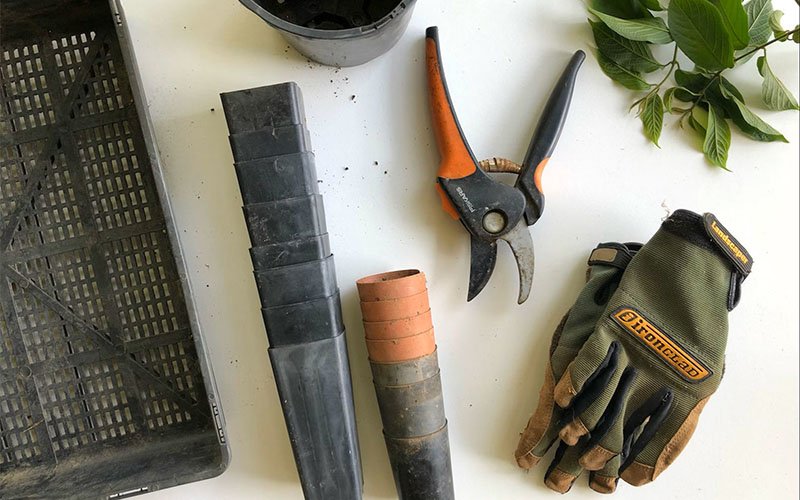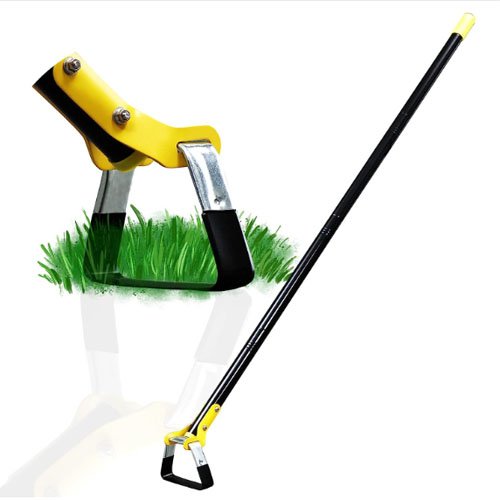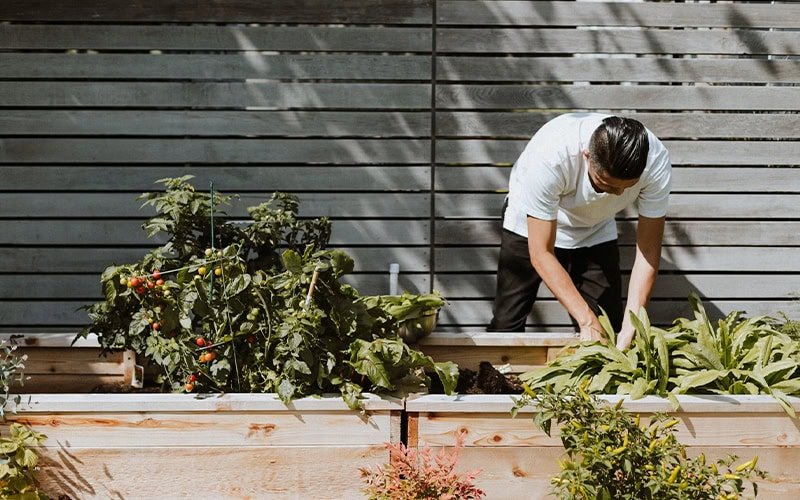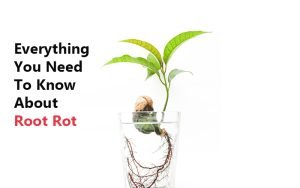Don’t you just love the smell of freshly watered mud? Or the first signs of greenery on your flower bed? Gardening connects us with nature. Dirty knees don’t scare us as we find our meditative bliss in the soil running through our fingers. The earthy aroma sends us to our happy place while we sow our seeds with love and intention.
Embarking on the journey of gardening can be a rewarding and fulfilling experience, but the right tools can make all the difference even with beginner friendly plants. If you’ve just discovered that you have a green thumb, you came to the right place! In this guide, we’ll explore the best gardening tools for beginners. Let’s dig in and cultivate success together.
What Basic Gardening Tools Do I Need?
1. Hand Gloves
Let’s dive into the dirt with the first must-have tool for any gardening enthusiast – gloves! Gardening is a hands-on experience, but it doesn’t have to be a thorny affair. The right pair of gloves are essential and are your green-thumb superhero.
Slipping into durable gloves that fit you well prevents blisters and ensures a secure grip. Think about those water-resistant yet breathable fabrics, keeping your hands cool and comfortable as you work your magic in the garden.
Longer cuffs aren’t just a style statement; they’re your shield against scratches, protecting wrists and forearms while keeping soil at bay.
To make sure your gloves last longer, you should keep them away from sunlight, water, and pesky insects, when not in use. This will keep the fabric in good condition for the years to come.
Check out these hand gloves:
Here’s a list of some of the best gardening gloves that you can find on Amazon. All the products listed below, vary in terms of the materials used, product weight, design and feel so that you can pick out what best suits your needs.
2. Hand Trowel
Get ready to unearth the secrets of the mighty hand trowel – your go-to tool for conquering the soil, banishing weeds, and orchestrating the perfect transplanting performance. It’s your ticket to a flourishing garden.
This is a versatile tool with endless usage. The hand trowel is your ultimate sidekick for breaking up soil in those small, intricate areas like flower beds or vegetable gardens. The sharp blade effortlessly tackles clumps of soil, leaving you with a smooth, level surface ready for planting perfection.
Have a weed problem? The hand trowel should be your weapon of choice. With a swift motion, bid farewell to unwanted intruders in your garden. Whether you’re a seasoned pro or a gardening rookie, transplanting becomes a breeze with the hand trowel. Perfect holes for seeds, moving established plants, or repotting – this tool’s sharp blade completes the task quickly and efficiently.
Who needs the hassle of spreading fertilizer or compost by hand? With a hand trowel, you can scoop up a shovelful, and distribute it evenly over your garden beds.
Check out these hand trowels:
We picked some of the best hand trowels from Amazon for you to check out.
3. Hand Fork
Are you trying to weed out small and delicate parts of your garden without disrupting your seedlings? You should go for a hand fork, it’s a must-have in every gardener’s toolkit. The straightforward design features a handle, typically crafted from wood or plastic, and two or three metal tines, each around 4-6 inches in length.
Let’s talk about cultivating – the key to creating that dream garden soil. The hand fork excels at breaking up the soil, creating a loose, crumbly texture ideal for planting. With this tool, you can effortlessly loosen the soil without causing harm to the precious roots of your plants. It’s perfect for mixing in compost or organic matter to enhance soil structure and fertility.
The hand fork’s tines are your allies in digging out weeds and loosening soil around their roots, making it a breeze to eliminate them without resorting to harmful chemicals. The hand fork creates small, neat holes in the soil for seedlings or bulbs and gently pushes the soil back over them. It’s the perfect tool for precise and efficient planting.
Now, when you’re on the lookout for your gardening sidekick, remember these tips. Seek out a hand fork with sturdy, well-made tines that won’t shy away from the challenge. The handle should be comfortable, easy to grip, and made of durable material ready for repeated use. So, get ready to cultivate, weed, and plant like a pro!
Check out these hand forks:
These hand forks are lightweight and easy to maneuver through the garden.
4. Watering Can
A water can is your garden’s hydration hero! We’ve got two main contenders in the ring: plastic and metal cans with hundreds of styles, colors, sizes, and nozzle options at your fingertips.
Which watering can should you choose?
Plastic cans might be lighter, but they won’t stand the test of time like their metal counterparts. If you’re eyeing metal, go for galvanized ones to resist rusting and ensure longevity.
Consider the size of your watering can in relation to your strength. Did you know a gallon of water weighs just over 8 pounds? Pick a can that suits your capacity without turning watering into a workout. The handle position is also crucial. It should let you carry a full can effortlessly and tilt it for a smooth pour. Two-handled designs are a game-changer, providing stability, especially for our younger and elder gardeners out there.
You might find yourself needing not one, but two watering cans. Picture this: a larger one with a sprinkler head for your outdoor garden, and a smaller, long-necked version for your beloved houseplants. It’s all about catering to different watering needs.
Check out these watering cans:
We picked out these watering cans based on their size, material used, ergonomic shape and design.
5. Hose
It’s a vital tool that can make or break your watering game. There are various factors to consider- lengths, diameters, and specific uses. Let’s dive in and make an informed choice for your garden oasis.
The Length:
A hose can range anywhere from 25 to 100 feet. Your garden’s distance from the spigot determines your ideal hose length. No need for a 100-foot hose if your garden is a mere 10 feet away. And if your garden sprawls in the backyard, you might need to connect multiple hoses for optimum reach.
Diameter Dynamics:
Hoses don’t just differ in length; they also vary in diameter. The most common is the ½ inch diameter, but you can also snag hoses with ⅝ or ¾ inch diameters. Why does it matter? Well, the diameter controls water flow. A ½ inch hose disperses 9 gallons per minute, while a ⅝ inch hose ramps it up to 15 gallons; a ¾ inch hose can unleash a whopping 25 gallons per minute.
The flow of the water can affect your plant’s health. Too much pressure stunts the growth of delicate plants and saplings and can even disrupt the nutrients on the plant bed. So you must pick a hose that will not be too harsh on your plants.
Specific Hoses for Specific Needs:
Who said you can only have 1 hose? Sprinkler hoses, capped at one end, are perfect for watering lawns or new planting beds. Soaker hoses, with a porous structure, slowly water plant roots. Flat garden hoses ace the storage game. Choose the hose that aligns with your garden’s unique needs.
Tips for Hose Longevity:
- Keep it out of direct sunlight
- Drain and coil it between uses
- Hang it when it’s not in use
- Fix the kinks on the hose before storing it away
- Winter calls for shelter – store hoses in a garage or shed
- Don’t leave them lying around to avoid accidents (like stomping on them or tripping over them)
Check out these hoses
Here are some of the best gardening hoses in the market:
6. Adjustable Nozzle
Having an adjustable nozzle solves a lot of problems that come with a harsh water flow, as mentioned above. Imagine a watering experience tailored to the unique needs of each plant. That’s the magic of the adjustable nozzle – a transformative tool that puts you in control, allowing you to tailor the water flow with precision. Adjustable nozzles understand the diversity of your garden. Whether it’s a delicate spray for tender seedlings or a powerful jet for cleaning, these nozzles come with a range of settings, ensuring adaptability for every corner of your green sanctuary.
An adjustable nozzle lets you control the water flow, conserving this precious resource and ensuring each drop is directed where it’s needed the most. Whether you’re tending to a lush flower bed or a row of potted plants, let the adjustable nozzle be your guiding wand.
Check out these adjustable nozzles
These nozzles provide you greater functionality with your watering needs:
7. Spade
A spade is a garden workhorse. This short-handled square shovel, tackles everything from digging holes for plants to edging, lifting sod, and effortlessly evens out the mud. A reliable companion in your gardening endeavors, a good spade is an investment that pays off for a lifetime.
A spade’s repertoire includes digging, edging, sod lifting, and dirt relocation. It’s the go-to tool for a range of garden tasks, making your gardening life a breeze. The treads present on top of the blade aren’t just for show – they provide a robust and comfortable foot surface when that extra push is needed. Your spade is an extension of your strength, ensuring efficient and effortless digging.
Ash hardwood handles are the unsung heroes of spade construction. Durable and shock-absorbing, they keep vibrations at bay, allowing you to work in comfort. Plus, they come in long or short handles, giving you the flexibility to choose based on your preference. Longer handles offer more leverage but come with a weightier feel.
Yes, a good spade might lean towards the pricier side, but consider it an investment in your gardening legacy. With the right care, it’ll stand by your side, turning your gardening visions into reality.
Check out these spades
Here are some of the best light weight spades in the market
8. Hoe
Your hoe should be as unique as your garden. So, consider your garden type. A robust, wide hoe is perfect for a vegetable garden, tackling sturdy tasks with ease. For perennial gardens that demand a delicate touch, opt for a thinner hoe. Look for a hoe with a comfortable handle and a long reach. The right handle ensures comfort and control as you prepare beds and cut down weeds.
A sharp blade is the key to seamless hoeing. It not only works better but also makes your gardening tasks easier. Choose a hoe that’s sharp and ready to slice through soil and weeds effortlessly. Weeding hoes, like the hula or stirrup hoes, have an open square head and work with a back and forth motion on the soil surface. They are your dancers in the garden, gracefully cutting down top growth and keeping weeds at bay and a definite must have for outdoor gardeners.
Check out these hoes
Here are some of the best hoes for your garden:
9. Watering Wand
Let’s explore the magic of the watering wand – it sprinkles a gentle rain to the trickiest spots in your garden. Your plants basking in a gentle rain shower is the courtesy of the watering wand. This magical tool offers a delicate touch, ensuring your plants get the hydration they deserve without any water-related stress.
The beauty of a watering wand lies in its extended reach. It’s your ally for out-of-the-way containers, hanging plants, or those back edges of borders that often get overlooked. A versatile tool for a comprehensive watering experience. With built-in shut-off valves in the handle are your secret weapon for conserving water and adjusting the flow according to your garden’s needs – it’s named a wand with good reason.
Watering wands come in a range of lengths, from 10 to 48 inches. Choose wisely based on your garden’s unique layout – go longer for high-hanging baskets and shorter for those tight, hard-to-reach spaces.
Check out these watering wands
These watering wands improve flexibility to your watering needs:
10. Seed Starter Kit
Let’s dive into the world of seed starter kits – the essential tools to kickstart your gardening journey. Imagine your seeds being cradled in the perfect environment, gently encouraged to sprout and thrive. That’s the magic of the seed starter kit – a nurturing haven for the tiny wonders that will soon blossom into your garden’s pride.
Seed starter kits are as unique as your garden needs. They come in various sizes and configurations, ensuring a perfect fit for your gardening space. Whether you have a sunny windowsill or a dedicated seed-starting area, there’s a kit waiting for you. It often includes everything you need – from nutrient-rich soil to trays and domes, creating an ideal microclimate for germination. It’s your gardening journey’s jumpstart.
Seed starter kits are not just for beginners; they elevate the game for seasoned gardeners too. They streamline the process, ensuring a higher success rate in germination and giving your garden a head start for a vibrant growing season. You can customize according to the environment you want and monitor the growth of your seedlings.
Check out these seed starter kits
Here are 2 of the best seed starter kits on Amazon
How To Take Care Of Your Gardening Tools
Clean Regularly:
Make it a habit to clean your gardening tools after each use. Use a stiff brush or a putty knife to remove dirt, mud, and debris. This prevents the spread of diseases between plants and keeps your tools in optimal condition.
Oil Metal Parts:
Metal parts of your tools, such as blades and cutting edges, can benefit from a light coating of oil. This prevents rust and ensures smooth operation. Simply wipe the metal surfaces with an oily rag after cleaning.
Sharpen Blades:
All blades lose sharpness over time leading to blunt cuts and damaged leaves. Keep your cutting tools sharp for efficient and clean cuts. Regularly sharpen blades using a file, sharpening stone, or specialized tool sharpener. A sharp blade not only makes your work easier but also promotes healthier plant growth.
Inspect for Damage:
Before and after each use, inspect your tools for any signs of damage or wear. Replace or repair parts as needed to ensure that the tools function properly. This proactive approach extends the lifespan of your gardening tools.
Store Properly:
Store your tools in a dry, cool place to prevent rust and deterioration. Hang them on hooks or store them in a tool shed to keep them organized and easily accessible. Avoid leaving tools outdoors where they are exposed to heat and moisture.
Handle Carefully:
Treat the handles of your tools with care. Wooden handles, in particular, can crack or splinter if exposed to excessive moisture or sunlight. Sanding and coating wooden handles with linseed oil improves their health and longevity.
Disinfect Regularly:
If you’ve been working with plants that may harbor diseases, disinfect your tools to prevent the spread of pathogens. A solution of one part bleach to nine parts water is effective for cleaning and disinfecting.
Invest in Quality:
Choose high-quality tools from reputable brands. Quality tools are often more durable and easier to maintain. While they may have a higher upfront cost, they can save you money in the long run by lasting longer.
Rotate Tools:
If you have multiple sets of tools, consider rotating their use. This helps prevent excessive wear on one set and ensures that all your tools get regular maintenance and attention.
Educate Yourself:
Stay informed about the specific care requirements of each tool you own. Different materials and types of tools may have unique maintenance needs. Being aware of these specifics will help you care for your tools more effectively.
Conclusion
So, here’s our list of the 10 best gardening tools for beginners. From the sturdy spade, the magic of the watering wand, to the nurturing embrace of seed starter kits, and the precision of adjustable nozzles – each tool plays a unique role in crafting a thriving garden. As you embark on your gardening escapades, choose wisely and tailor them to your garden’s needs.
Happy gardening, and may your green journey be filled with joy, growth, and the sweet scent of success!










































